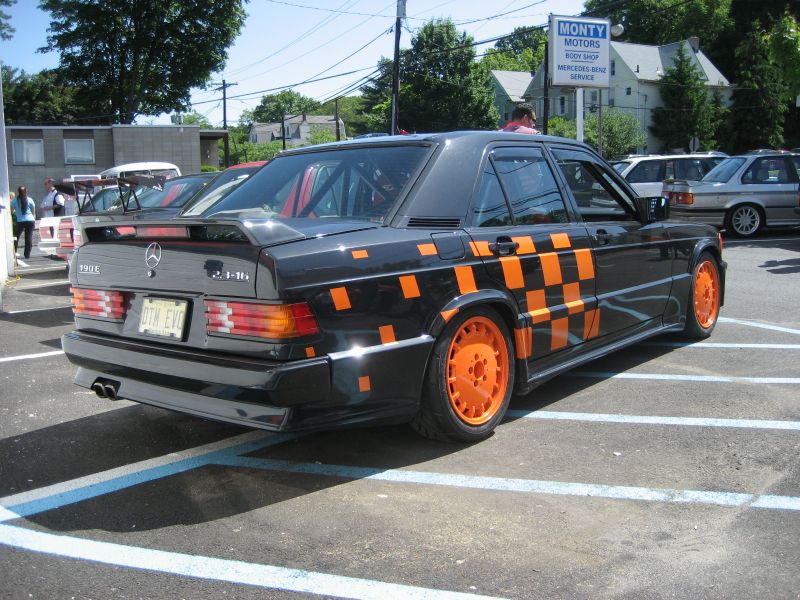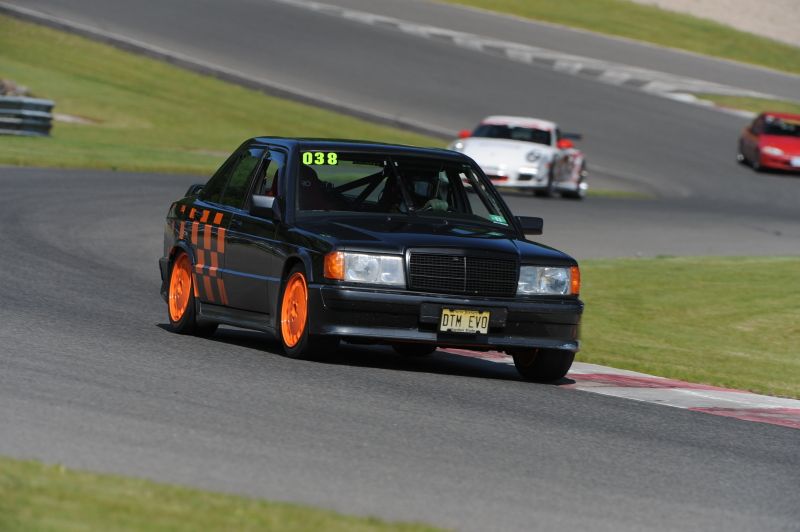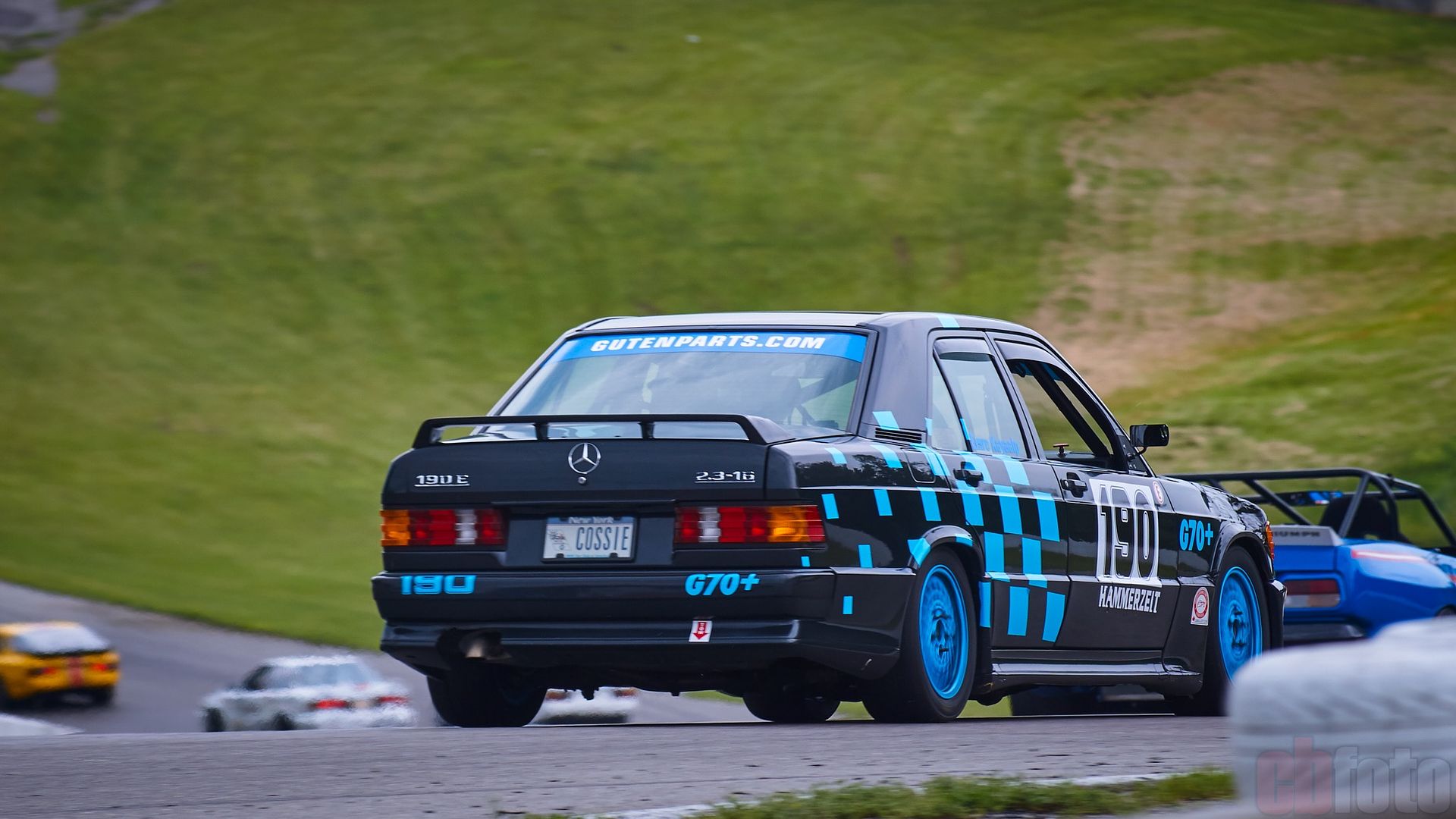As a custom painter for many years, I have a middle ground position. the factory paint is usually the best adhered to the car, so using it as the substrate is desirable, once the topcoat is sanded away (and in a BC/CC situation where the clear is fading/delaminating, it needs to be all gone, but not down to/past the primer). I tend to use 320grit on a DA or 400 grit wet on a block to sand down the paint surface to prep it for respray, as that's enough bit that it hooks in good, but not enough grit that the sanding marks show.
Modern material are the best for durability/gloss/and ease of spraying, so ude them. But they can be pricy (a gallon of unmixed metallic paint can run in the hundreds of dollars, then you need the reducers and catalyst AND the clear paint with ITS reducers and catalyst).
Of course, there's always MAACO.
Actually, you can get good results at Maaco, if you do good prep work before hand. Prep is almost all the labor cost in a high quality paint job (true, the materials themselves are more expensive: Real urethanes rather than the synthetic enamels with urethane catalysts that Maaco uses), so if you're careful, you can get a good job for cheap with Maaco and your work. (You may not go, but others reading this might, and this will help get the best job possible).
A good shop will often have to go over the car anyway, so you won't save too much by doing work yourself, unless you are confident enough in your prep work just to have them spray over it... But there are still steps you can take to save some labor and time.
Remove as much trim as is possible. Removing trim means 1) not having tape lines, and 2) someone else isn't responsible for loss or damage. It also means that the prep work can be done right under where the trim was, for a higher quality finish job (and edges around trim is where jobs usually fall down when economizing. Lack of sanding right next to trim can cause paint to peel later). If you're changing color, also remove door panels and carpet edge trim in the door jambs. Do a thourough job of cleaning the jambs (even if you're not changing color. This keeps dirt from coming back out into the new paint. A good shop will do it, but it's labor, and you can save time there.) On the same lines, clean the engine compartment thoroughly. Get a good degreaser/wax remover, and go over the whole car. Especially the door jambs, as years of Armor All can accumulate and cause problems (Armor All and the like are silicone sealants. Paint doesn't stick to silicone, and usually has serious reaction problems to even a drop of the stuff...).
If you are doing the engine compartment, degrease everything, and pull back as much wiring as you can, or completely mask everything (an easy trick is to use aluminum foil to wrap intricate bits...)
These are basics that can save the paint shop a bit of time and hassle. It may not save much money, but the job will be better, which ends up the same thing. If you want to go farther (or go to Maaco), you can do much of the sanding yourself. On areas where no bodywork is necessary, get a sanding block and 320 grit wet-or-dry sandpaper, of good quality (3M or Mirka Gold). Carefully wet sand the body with the block (taking care around edges, so as not to sand through) until all trace of gloss is gone, and you have a nice, even, dull finish, getting as close to the factory primer level as you dare (remember, electrostatically applied, baked alkyd enamel like the factory uses is the absolute best substrate for new paint there is... bare metal requires serious chemicals to make it so that airborne applied paint sticks and doesn't have corrosion problems later. And NO "baked" paint afterward is truly baked like the factory paint is. For one, when painting at the factory, there are no glass, trim, or interior parts installed to be damaged by high temps.) Sand in linear motions, but alternate directions to keep the sanding even and level. In the jambs (if painting them) use the 320 by hand in as much as you can reach easily. Then get 3M Scotch Brite pads (the red ones) and go after them again (the Scotch Brite gets into all the crevasses regular sandpaper can't). Use the Scotch Brite on the body crevasses that are hard to reach with sandpaper (especially around edges of panels)
Any areas where bodywork is necessary (door dings, minor dents) need to be hit quickly with 80 grit paper. Door dings need to be shown up so they can be attended to (if you want, you can do the work yourself with a high quality filler. I use USC's BaseCoat/ClearCoat, as it spreads smoothly in very thin layers, is easy to work, extremely easy to sand, and doesn't stain through the top coats. It is also light and durable (I had a customer get hit in the same spot that I had done serious bodywork on and the filler that was there not only didn't crack, it didn't separate from the body surface)). If you are going to be doing the bodywork (say before going to Maaco) try to always hammer and dolly out most of the dent, so the filler is only a skim coat to fill the minor hammer ripples left. Filler is better when thinner (anything under an eighth inch should last a lifetime). And again, try NOT to remove factory paint if at all possible, because filler sticks better to paint than to metal, and there is little chance of trapping water or corrosion that way. Just scuff it well with 80 grit (don't use 36 or 40 grit, as it tends to leave scratches that show up later after the paint and primer shrink up...) before applying. Apply filler at the exact level you need it at, so to reduce sanding later. Feather well to the outside of the dent. Use a long board or longer block sander to make sure it's even and level (waves are for beaches...).
You can get good primer results on bodywork or edges that have been sanded to metal with Krylon sandable primer, believe it or not. Just spray a couple light coats, let dry thoroughly (24 hours is best), sand lightly with 320, then spray it lightly again to level it out. Major primer areas should be shot with a catalyzed urethane primer, like PPG K200 (or the flexible version for urethane bumpers). Again, let cure completely (24 hours is best, even a couple days is good). Block sand wet with 320 before taking it to the paint shop. A good trick to make sure the surface is level is to lightly spray a spray can of color (like Krylon flat black) over the primed areas, letting it dry, then hitting it with the sanding block. This guide coat will show up imperfections that can be attended to, either by more sanding, or more bodywork if necessary.
After all is completed, clean completely again with a wax and grease remover.
I noticed I didn't say anything about masking and taping... ALWAYS use a good masking tape. Cheap tape is no savings ever. 3M or American Performance automotive masking tape is all you want to use. If masking needs to be done, take your time (this is why you remove the trim... so making perfect edges isn't as critical, and there are more "natural" places to mask to...)
After this, it's ready to paint.
If you do go to Maaco after this, get their catalyzed paint (otherwise it will NEVER get repainted without completely stripping everything....), and if you go metallic or pearl, definitely get the clear topcoats (clearcoat is merely unpigmented paint, regardless of who does it). If you go solid colors, clear isn't necessary. Just have them put an extra coat on it.
After you get it home, let it cure for a couple days to a week. Then, hit it with 1000 grit wet sandpaper until all "orange peel" and dirt nibs are gone (be very careful of edges. In fact, stay a quarter inch or so away from the edges to start with). Hit it lightly after that with 1500 grit. then either a pro detailing shop OR even you can use rubbing compound and a foam pad, and polish the paint. Top it off with Meguire's #9 on a foam finishing pad for a deep gloss. But do NOT wax or treat your paint otherwise for 90 days! Regardless of where it comes from. The paint needs this time to cure properly, and waxing will inhibit that, and could possibly damage the paint for the long term. (Top show car guys do it right off, but top show cars never stay the same color for decades, so longetivity isn't as important...). Do these steps right, and you'd be surprised that a Maaco paint job can look considerably better than factory... (of course, it's still cheapo synthetic enamel with urethane catalyst, but if you're on a serious budget, it can still look like you spent good money...)









































